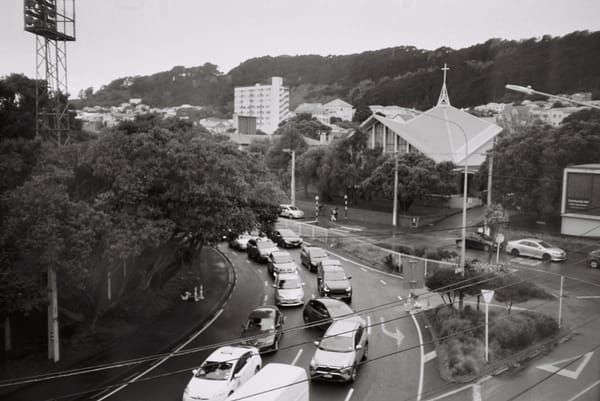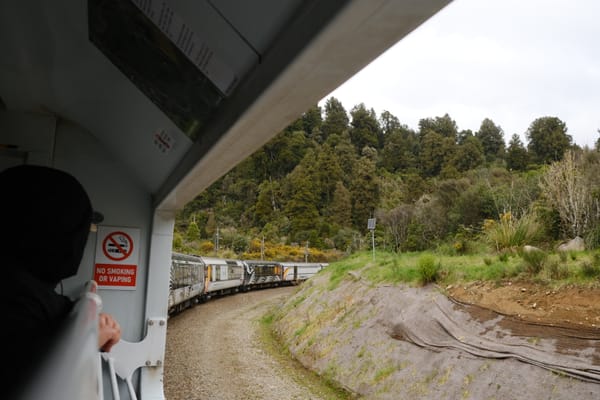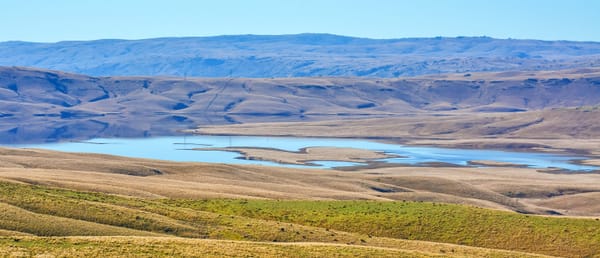How can we get rail back on track?
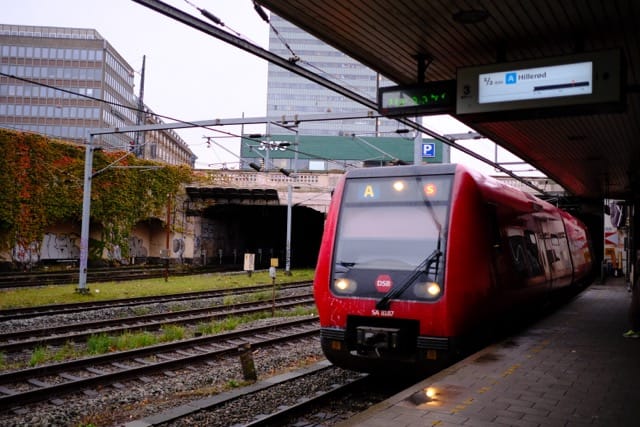
Aotearoa has a stunning railway history. As a country, we built an astonishing 2000km of track within a decade. Yet, mismanagement, policy, and neglect in the 20th Century drove us to cars and trucks.
In this final part of my series on rail, I want to explore what is possible with a revitalised rail future. Around the world, we’ve seen stunning leaps in train technology. Trains are a time-tested transportation mode ready to cut the pollution out of how we travel.
We don’t need magical bullet trains to make transport (which is a fifth of New Zealand’s pollution) climate friendly. The world can easily provide standardised and cost efficient rail that can be faster than driving.
We need leaders who feel like they can win with a revitalised rail future, and the investment necessary to start a new golden age in train travel. Let’s explore what it could be like to take the train again.
Why do we need trains?
Why do we need to rebuild our rail network? Can’t we just use the roads we already have and only use electric cars and trucks?
Without rail, we won’t solve climate change fast. The longer we take to reduce pollution, the more likely it is that our communities will be underwater. Based on how we’re going right now, parts of Petone will be below sea level before I die. We need to use everything in our toolkit to move quickly. Electric cars are getting cheaper, but they’re still too expensive. Hydrogen-powered trucks are barely commercially viable yet, and will only power 30% of the global trucking market by 2050. It is far too risky to keep waiting for magical new technologies to save us.
Thankfully, we have had the technology we need for nearly a century. Electric trains were first introduced into Wellington in the 1930s. With trains powered by our renewable electricity grid, we can transport people and goods with nearly no pollution. Electric trains are a time tested, reliable technology waiting in the wings.
We want a world-class rail network that serves people and goods. Moving people is crucial: when voters stop using a transport mode, goods stop using it too. As more people took to highways, more trucks followed suit. Heavy trucks alone create 5% of our pollution. People are the political armour of a rail network: by building a world class train system we can secure easy freight too.
We have the rail lines. We have had technology for a hundred years to solve this problem. It’s all ready to be bought and deployed without reinventing the wheel. We can do it in ten years. Here’s what we’ll get and how we’ll get there.
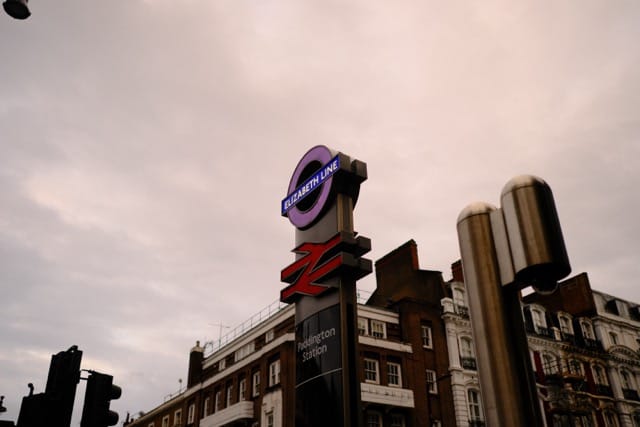
What’s possible for the future of rail?
If you’ve visited Japan, the UK or China, you already know how much more convenient a good train system is compared to a car. You never need to worry about parking or timetables. Your journey is convenient and far less stressful.
We can have a rail network that offers this lovely experience. Historian Dr. André Brett, in his fantastic Can’t Get There From Here book, outlines what modern and convenient train services could look like.
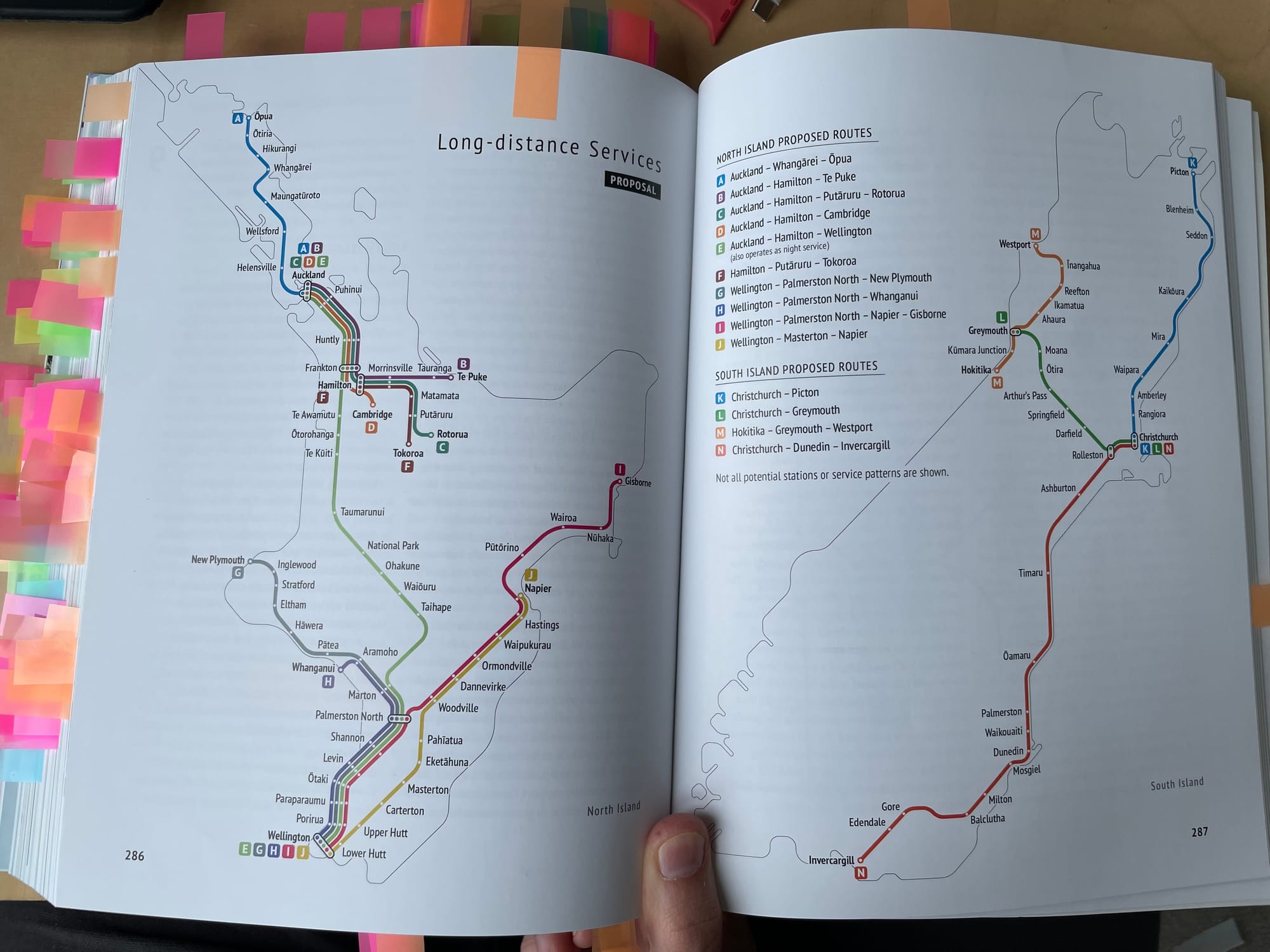
By revitalising our existing train networks to get people moving from place to place on rails rather than tyres, we can deliver fantastic benefits to our citizens.
If I was able to take the train to my hometown of Whanganui from Wellington, I could arrive half an hour faster without having to stress about tailgaters at all. My partner and I could read while we travelled. We could land straight in the centre of town, and immediately go out for a cup of coffee with whānau.
If we took a train to Auckland, we’d never have to worry about the travel time to and from the airport, waiting in line for security, taxiing and landing, then picking up bags at the nightmarish dystopia of the baggage carousel. We’d get there a bit slower, but we’d be able to stay online, stretch our legs, and see the beautiful Tongariro National Park. When you think of the drudgery that comes before and after flying, rail is more appealing than you think.
With good rail, people who don’t have a car or license would be able to move around the country. Do you know anyone who is disabled? Who isn't allowed to have their license any more? Do you know any tourists who haven’t got a New Zealand driver’s license? Rail removes the need for people to drive without confidence or permission to get around.
Kids can play, stretch their legs, or go to the bathroom without stopping the journey. Parents can be fully attentive to their little ones rather than balancing entertaining them and focusing on driving.
Workers can commute to city centres from the regions and work on the way. Business leaders could quickly get to places that aren’t Wellington, Christchurch or Auckland with ease. That’s simply not possible when we depend on flying and driving to get around.
Best of all, for every person added onto a train, highways and city streets have one fewer car clogging them. The beauty of a transport network that has multiple modes is that people who need to use roads (like ambulances) face less traffic.
On top of all of that, the infrastructure is just as useful for freight as it is for families. By creating a useful train service for people, our train tracks won’t be neglected again. Done right, it could cut carbon emissions substantially.
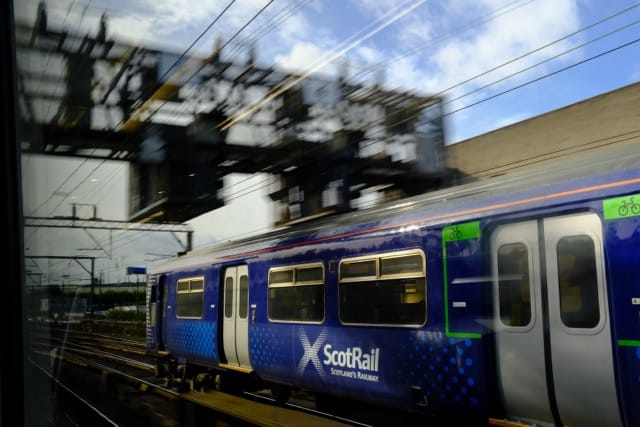
How on earth do we do it?
I wish I was smart enough to provide a detailed plan to Simeon Brown and have him choo-choose better rail. Unfortunately I am not a railway engineer (yet). However, clever people like Dr Brett have explored at a high level what can be done.
If we improve our rail network so we can travel 100km/h (half as fast as a French train), nearly every journey you could take in New Zealand would be faster by train than a non stop drive. Going this fast is not just achievable: it’s standard practice overseas.
We can achieve fast rail with targeted upgrades like straightening tracks and adding passing lanes to remove bottlenecks. That means people, timber and livestock can move along faster, and not have to compete with each other for space. The system will be more resilient.
We can also lower the environmental impact by electrifying the entire track between Auckland and Wellington. If we work as efficiently as Scotland, we could double the amount of electrified track for just 6% of the Coalition’s current budget for road improvements.
We should train and retain a new generation of well-paid workers to service the tracks. They’ll stay here rather than going to Ireland or Australia because they’ve got guaranteed maintenance work for the rest of their lives.
Importantly, the Government should invest in a fleet of battery powered and diesel + electric trains. These are machines that run on electricity lines where they can, and on batteries or diesel engines everywhere else. These are the Toyota Corolla of trains, not gold plated bullet trains.
These trains are available right now. We don’t need to invent a single thing to get frequent journeys between places like Gisborne and Wellington. More trains mean more trips each day. Nothing beats the freedom of being able to catch the train when it suits you.
Finally, we’ll make it expensive for big trucks to move stuff on roads via regulation. Trucks wear roads down more than cars, and they pollute way more too. Moving stuff by truck should be discouraged by regulation. We want our roads to stay in good shape for people who still need them. Government can make rail the default freight carrier again.
Every solution I mentioned is possible right now. Implementing this plan isn’t a unique engineering problem: trains exist in mountainous areas of Norway and electrified lines power trains in Japan. Other countries have innovated for us. We get to reap the benefits.
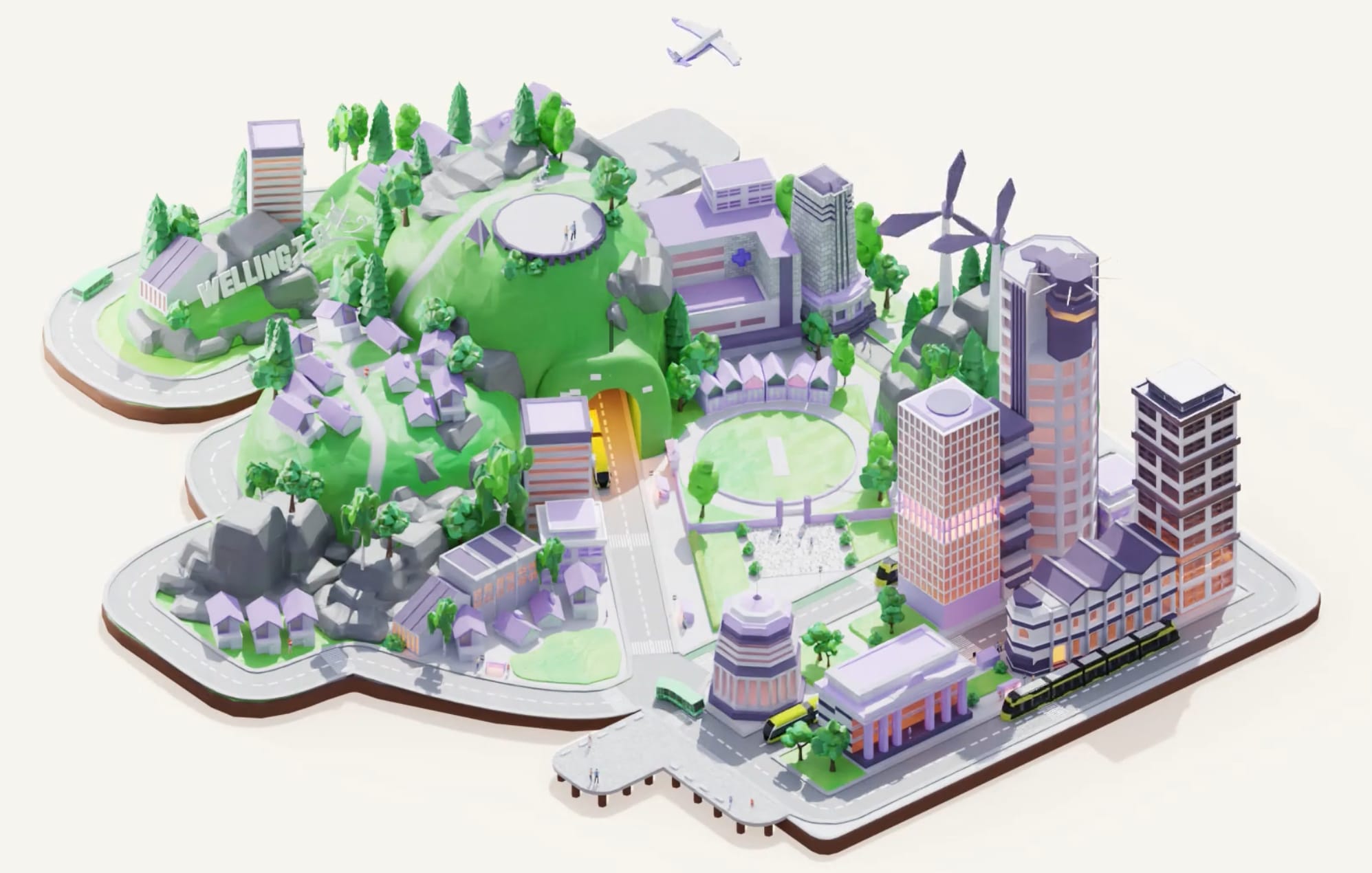
What’s really keeping this from being done?
When I wrote this, it made me wonder exactly why this wasn’t on the cards when Labour was in power. They were heading in the right direction, but doing so at a snail's pace.
Take light rail in Wellington: a few kilometres of track was expected to take 25 years to finish. No wonder that got cancelled. Building that slowly and constantly asking people again and again what they wanted without delivering it was a recipe for spending a lot with nothing to show for it.
Across housing, bridges, roads, rail, dams and pipes, we see a serious problem in our ability to deliver infrastructure quickly. It is a challenge many developed countries face: but it’s not an unsolvable issue. By the time a project is close to starting, the government changes and everything gets scrapped. When all our (non-highway) infrastructure gets cancelled every six years, our skilled workers leave to places like Ireland or any other developed nation investing in rail.
With certainty of work for skilled people, off-the-shelf solutions, and real consultation rather than 20 years of tick box exercises, we can deliver low carbon infrastructure fast. I have an article coming very soon about that very topic.
With the right tools, we can deliver a revitalised rail network within a decade. New Zealand built two thousand kilometres of train tracks within a decade in the 1870s. Our technology is lightyears ahead now, and the rail network is already here. This is possible if our leaders decide to. The faster we deliver, the faster people enjoy the benefits, and the harder it is to kill.
Climate change needs action now. We must start implementing reliable technologies that cut pollution fast. Trains are that technology.
I hope very much that ministers like Simeon Brown see the light at the end of the tunnel. If not, will New Zealanders demand that the government gets rail back on track?
Correction: I previously mentioned we could buy a lot of trains for less than the Government’s tax cuts on landlords. I got the maths wrong – so I’ve removed it. Sorry!


